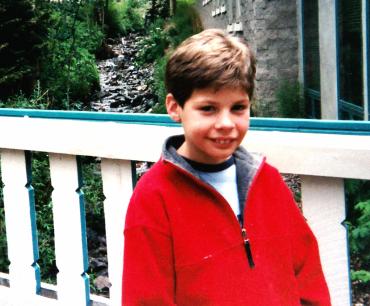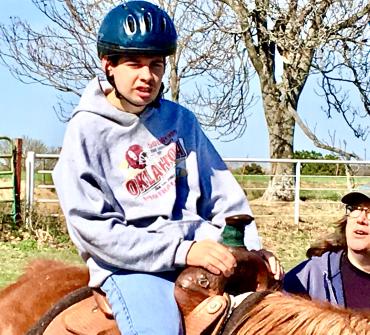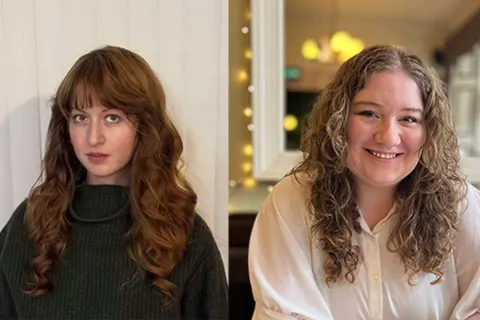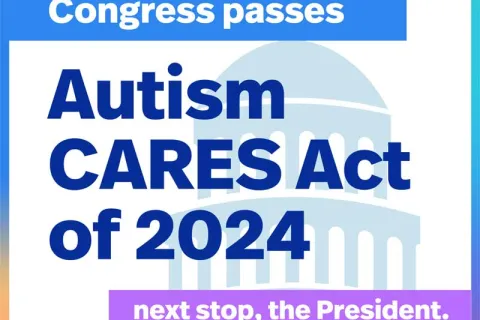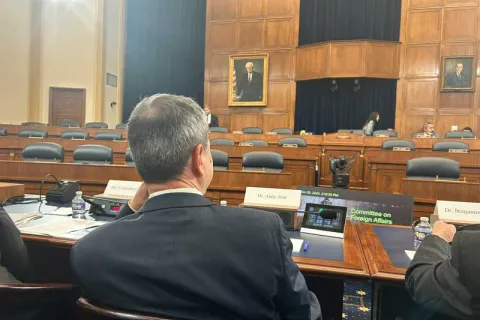Family finds answers through MSSNG
By Marta ChmielowiczWhen Trey M., 30, was first diagnosed with autism in 1995 at age 3, his family got straight to work finding information, therapies and supports that could help him one day live an independent life. But with the Internet still in its infancy, Trey’s family had limited access to information that could help their son. Instead, they took a trial-and-error approach, testing for seizures and dietary issues that could be the cause of their son’s biggest medical challenges.
They did not find their answer until 2021, when they received Trey’s genetic testing results through the Autism Speaks-supported MSSNG program. After seven years of waiting for results, they learned that Trey has Phelan-McDermid Syndrome, a rare genetic condition caused by variants, or changes, in the SHANK3 gene. Features of this condition can include developmental and speech delays, behavioral issues, seizures and a weakened ability to feel pain or sweat. It is estimated that only 1-2% of people with autism have Phelan-McDermid syndrome.
Now at age 30, Trey lives in a residential program and sees his family every weekend. He receives Applied Behavior Analysis (ABA) therapy, speech therapy and equine therapy, and has fallen in love with horseback riding and hiking. Thanks to the MSSNG program, Trey’s family has the knowledge they need to research interventions that can help Trey with his unique challenges, giving them greater peace of mind as they plan for his future.
In this Q&A, Trey’s father, Jim, shares his son’s experience with the MSSNG program.
Can you tell me about Trey and his autism journey?
Trey was diagnosed with autism around 3 years old. He had some delays at 18 months, but his speech developed until he was 4.5 years old. At that point, he lost most of his words and he’s basically nonverbal now. When he was 4.5, we started doing ABA therapy at home to help with potty training, eye contact and speech. He did drills to match colors and shapes, and flash cards to learn some simple words and basic sign language.
Through age 12, Trey went to public school. Then, he went to Heartspring, a school in Wichita, Kan. for kids with autism and other developmental disabilities. At age 14, he went to Melmark New England, a special education school in Andover, Mass., where he had one-on-one supervision during the day. We visited him every 8 weeks until he graduated at age 22.
Now, he is back in Oklahoma and living in a residential setting with three other individuals with autism. There are two support people in his home, and he gets ABA therapy and horseback riding therapy. That’s one of the things he likes to do. He doesn’t like television—he likes to hike, walk and ride horseback. He really likes people—at his old program in New England, they named him mayor because he shakes everyone’s hand and loves making eye contact. He could be the greeter at Walmart, but he would never let go of your hand.
What motivated you to get involved in the MSSNG program?
Ever since Trey was first diagnosed, we immediately started searching to learn everything we could about autism. I set up a bunch of online alerts to send me daily updates about autism. In the beginning, it was just a broad search—what could help Trey?
We tried different interventions based on our research. We learned that a lot of people with autism have been helped by eating a gluten-free diet, so we tried that for six months. At 8 years old, we took him to a gastroenterologist for an endoscopy and determined that Trey does not have celiac disease, so that didn’t help him.
Another thing we did around that age was take Trey to get a 24-hour electroencephalogram (EEG) to see if he had seizures. Our doctors informed us that some people with autism have micro-seizures that aren’t evident but cause a lot of their behavioral issues and other autism characteristics. That wasn’t the case for Trey either.
Then, a friend told me about the MSSNG program, so we contacted the Hospital for Sick Kids in Toronto to get involved. We sent in Trey’s blood sample in December 2013. It was many years before we got results from the whole genome sequencing, but in 2020, at age 28, we found out that Trey has Phelan-McDermid Syndrome. Now, we’re following that. We are involved in study with Rush Hospital in Chicago that is looking at the common characteristics of Phelan-McDermid Syndrome.
How did you feel when you got Trey’s diagnosis?
It wasn’t a great diagnosis, but it gave us relief knowing where we could concentrate our efforts to research what may be beneficial for Trey. In the past, looking for information felt like we were going around a large crowd looking for one person who we didn’t know. Now, the genetic testing has helped us target our search so we don’t have to keep trying random things.
Would you recommend genetic testing to other families of individuals with autism?
I think everyone should do genetic testing because it helps you do targeted research and helps researchers understand rare conditions like this. No matter the diagnosis, it’s better to know than not know. I’m not going to walk around blindly and say there’s nothing I can do. As long as I have cognitive ability, I’ll be pursuing some type of solution to help Trey.
What are your hopes for Trey’s future?
My hope is that there will be interventions that are more targeted towards Phelan-McDermid Syndrome so that Trey can be independent as he ages and require less supervision. Maybe he will and maybe he won’t, but at least now we know where to look for answers specific to his condition whereas for the first 29 years of his life, we had no clue.


